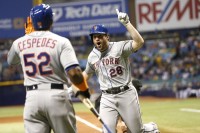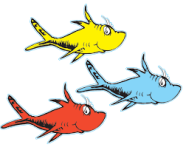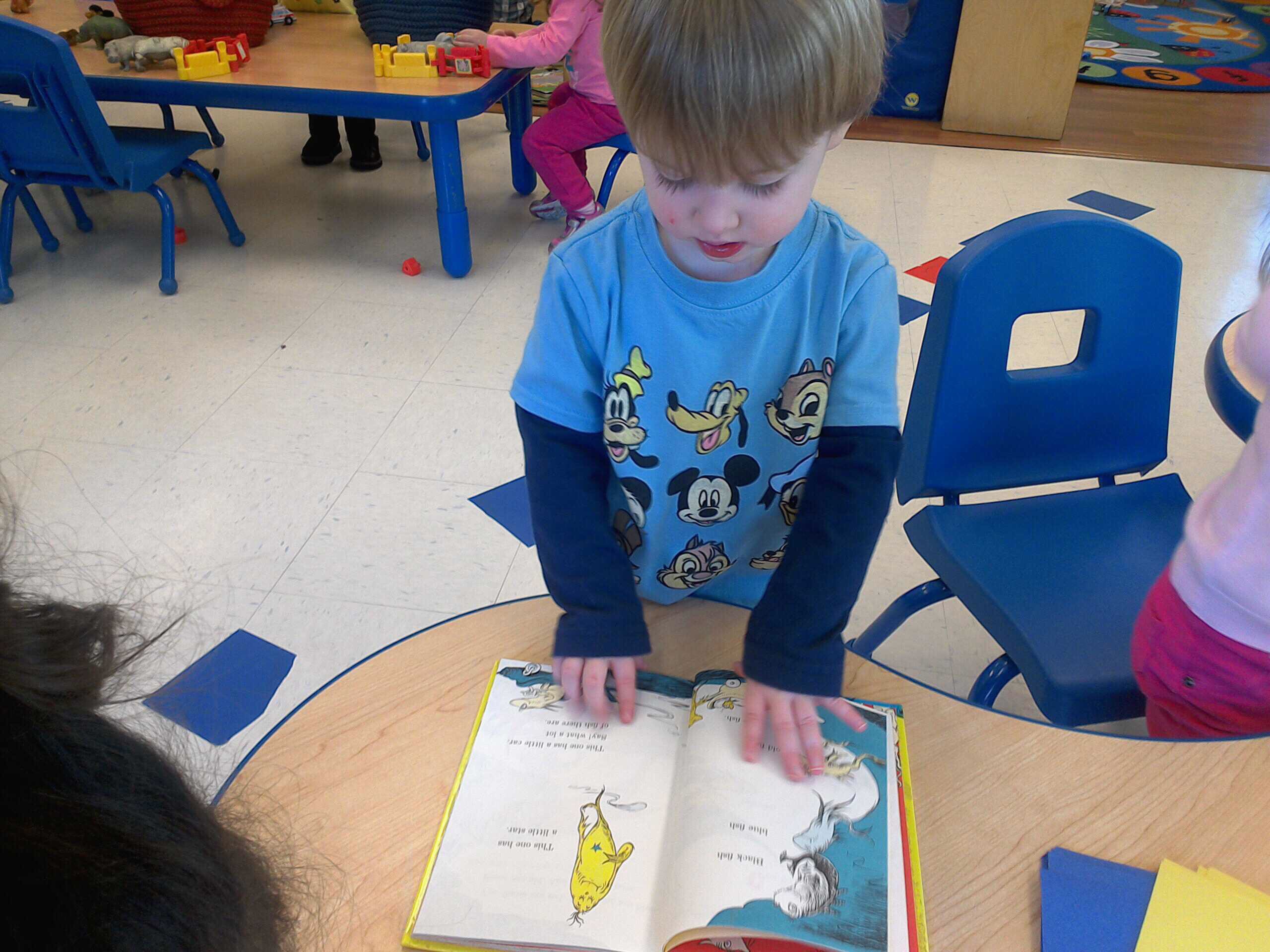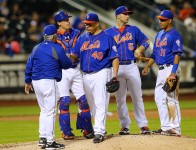Zack Wheeler
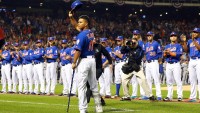
I’m sure Jedd Gyorko could be the answer to many questions. However, I’m fairly positive he’s not the answer to the question, “Who should be your starting shortstop?”
With the injury to Jhonny Peralta, Gyorko is the Cardinals starting shortstop. Unless the Cardinals make a move, Gyorko will be the shortstop for the next two to three months. Now, Gyorko was never anything more than an average second baseman which a career -1.5 UZR over his three year career. That doesn’t bode well for his chances to be a good to adequate shortstop. Like most, I’m assuming if any team can make it work, it’s the Cardinals.
With that said, it’s a good time for the Mets to call the Cardinals. From all the reports this Spring, it appears that the Mets might be looking to move on from Ruben Tejada. It’s probably the right move too.
Last year, Tejada had an impressive finish to the season. Although never mentioned as such, he was part of the reason why the Mets rallied to win the NL East. His gruesome injury in the NLDS was a rallying cry for the Mets and Mets fans throughout the postseason. However, he’s on the last year of his deal, and he’s an expensive backup eating up a spot on the 40 man roster.
The Mets right now have absurd depth at the shortstop position. Asdrubal Cabrera is penciled in as the starter the next two years. Wilmer Flores grew into the role and handled the position very well when pressed into shortstop duty again in the postseason. Former second round pick Matt Reynolds is competing for a utility role in the majors. On top of that, the Mets have two big shortstop prospects in Gavin Cecchini and Amed Rosario. Long story short, the Mets don’t need shortstop depth.
What they do need is 40 man roster space. So far, Jim Henderson is having a nice Spring and may be on the inside track to locking down a spot on the Opening Day bullpen. The Mets are talking about letting Kevin Plawecki start the year in AAA. This means, as of right now, Johnny Monell would open the year as the backup catcher. There’s a problem with Henderson and Monell making the Opening Day roster.
Neither player is on the 40 man roster, and the Mets have no spots open. Even if the Mets placed Zack Wheeler on the 60 day DL, the Mets would still need to drop someone else from the 40 man roster to add both Henderson and Monell. This could be accomplished by trading Tejada.
It seemed like Tejada turned a corner last year. Unfortunately, with one dirty play he is back on the bench, and frankly, occupying a roster spot the Mets need. It may not seem fair. It may seem cruel, but it’s time for the Mets too move on from Tejada. They should do it now with the Cardinals having a need, and the Mets wanting to maximize the return they would receive for Tejada.
Editor’s Note: this article also appeared on metsmerizedonline.com
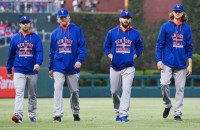
The general consensus as to why Hall of Famer Walter Johnson was so dominant was the saying, “You can’t hit what you can’t see.” In analyzing MLB’s Statcast data, that saying could now be applied to the young New York Mets pitching staff.
As the article notes, the Mets threw more pitches than any other team over 95 MPH. Nearly a thousand more. The main reason for this was the trio of Matt Harvey, Jacob deGrom, and Noah Syndergaard. Harvey’s two-seamer averaged 95.4, and his four seamer averaged 95.3. deGrom’s two seamer averaged 95.6, and his four seamer averaged 96.0. As all Mets fans know, Syndergaard led the pack. His two seamer averaged 98.3, and his four seamer averaged 98.4. Amongst starting pitchers Symdergaard threw the fastest.
This trio of hard throwing righties kept the Mets afloat in 2015 while the offense spluttered. When the team then assembled a major league capable offense, these pitchers led the Mets to the World Series. In 2016, it’s only going to get better.
Last year, the Mets had innings limits, skipped starts, and at times, six man rotations. Syndergaard wasn’t called up until May. In 2016, the Mets have said innings limits and the like will not be an issue. As such, all three of the Mets aces should be expected to make 32 starts and throw over 200 innings. This means more 95+ MPH fastballs. Again, batters will have trouble hitting the pitches they can’t see.
If that wasn’t enough, it gets even better. Steven Matz should start the year in the rotation. According to Brooks Baseball, Matz’s fastball averaged 94.57 MPH. Prior to Matz’s lat injury, his fastball averaged 94.90 MPH. With a full season of a healthy Matz, the Mets will further increase the amount of fastballs throw over 95 MPH.
In addition to a full season of Matz, the Mets can expect a half a season of Zack Wheeler. In Wheeler’s career, his four seamer averaged 95.87 MPH, and his sinker averaged 95.50 MPH. All told, upon Wheeler’s return, the Mets will feature a starting rotation that has five pitchers bringing the heat at over 95 MPH. That is just incredible.
However, why does it matter? Well, as FiveThirtyEight showed last year, it is just harder to hit a fastball that’s thrown 95 MPH and above. In total, batters swung and missed at pitches thrown this fast 22.8% of the time. That’s about 5-10% more frequent than pitches thrown slower.
More importantly, as we saw in last year’s NLCS, the Cubs are more likely to swing and miss at these pitches than any other team in baseball. Heading into the 2016 season, it appears that yet again it will be the Cubs standing in the Mets way. The pitching staff the Mets have constructed is not only effective against the Cubs, but also every single team in baseball.
The Mets 2016 pitching staff is the single best argument why any team in baseball will go to and win the World Series. The Mets young starters brought the heat last year. Next year will be more of the same.
Good luck to the National League next year because you can’t hit what you can’t see.
Editor’s Note: this article first appeared on metsmerizedonline.com
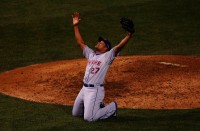
Last year, the Mets were carried by their pitching. It helped them sustain an anemic offense until the Mets got healthy and made trades. It helped carry them to the World Series. It’s the promise for the future.
That future first comes into question around 2019. That is the year that Matt Harvey becomes a free agent. Zack Wheeler could become a free agent the same year or the subsequent year. Two years later Jacob deGrom becomes a free agent. After that, the Mets will have to address the free agent case of Noah Syndergaard and Steven Matz. Naturally, this prompts the discussion of who the Mets should extend and when they should do it.
When these discussions take place, I find everyone to be extremely short-sided. Yes, it’s important to make a decision on the Mets starters, especially on Harvey, deGrom, and Syndergaard. However, I find that these discussions ignore Jeurys Familia. Like Harvey, Familia will be a free agent in 2019.
Familia was an exceedingly important part of the 2015 Mets. He was the stabilizing force at the back-end of a beleaguered bullpen. During 2015, Familia had the fifth most appearances. Of players who were strictly relievers, he had the third most innings pitched. He lead the league in games finished. He tied the Mets single season record for saves.
The advanced statistics also loved Familia’s 2015 season. He had an ERA+ of 200, which is astounding. It was the best amongst Mets pitchers. In fact, it’s a tick below Mariano Rivera‘s career 205 mark, which is the best in major league history. Familia’s FIP was 2.74, which, unsurprisingly, rates him as an excellent pitcher. Mariano’s career mark was 2.76. In essence, Familia’s 2015 was Riveraesque.
Keep in mind, Collins initially deployed Familia like Rivera. When it came time to close out the NLDS, Familia pitched two shutout innings. In the whole postseason, Familia had 12 appearances, and of those 12 appearances, he pitched more than one inning five times. He pitched 14.2 innings in those 12 appearances. Yes, he blew three saves in the World Series, but he only allowed one earned run the entire postseason. In reality, the blown saves were not on Familia but the Mets team as a whole.
Its important to lock-up some starting pitchers. If Harvey, deGrom, or Syndergaard leave, the Mets have other starters to keep having a strong rotation. If Familia were to leave, the Mets do not appear to have another reliever to take Familia’s spot. This makes extending Familia absolutely imperative.
So when it comes down to which Mets pitcher I would extend first, my answer is Jeurys Familia.
Editor’s Note: this article also appeared on metsmerizedonline.com
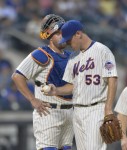
There are all sorts of pitching prospects. There are pitchers who were uber prospects like Matt Harvey. The question with these prospects is where they’ll slot in the rotation. Then there are prospects like Jeremy Hefner.
The prospects like Hefner aren’t no doubters. You’re not a no doubter when you’re a 5th round draft pick who was twice placed on waivers before pitching one big league inning. Hefner referred to himself as “an average prospect.” Average prospects need to make the best of not only their stuff, but also their chances. Somehow, it’s more satisfying when these guys make it. You want the Hefners of the world to succeed because you want to believe in a player that really is doing everything he can do. It’s what you tell yourself you would do if you had enough talent to get that chance.
Well, Hefner made the most of his chances. He showed the Mets enough in 2012 for him to be in the 2013 rotation (even though he might’ve been a placeholder for Zack Wheeler). As the calendar turned to June, he seemed to figure something out. He went on a stretch of eight straight starts allowing two earned or less. Now what happened next is up for debate. Initially, it was thought he regressed to the mean. The truth may just be he was injured. In August 2013, Hefner had Tommy John surgery.
It’s a crushing blow to a player who just arrived on the scene. It was also crushing to him, but also to the Mets. They lost not only Hefner, but also Harvey to a torn UCL. The two rehabbed together. Seeing Hefner’s promise, the Mets kept him around rather than release him. Then something horrible happened. Hefner was not progressing in his rehab. He needed a second surgery. It definitively ended his Mets career. It put his baseball career into question.
Anytime a player like Hefner suffers a setback like this it’s deflating. Part of what makes sports fun is the out of nowhere stories. Everyone knows Tom Brady’s and Mike Piazza‘s stories. They’re reminders that what you need to succeed in sports, and in life, is hard work and determination. Hefner had those qualities. His mind was willing, but his flesh seemed weak.
Fortunately, that’s not the end of the story. Hefner again worked his tail off. We shouldn’t expect anything else. He started pitching in the Winter Leagues. He pitched well enough to sign a minor league deal with the Cardinals. Normally, I hate the Cardinals and their players. However, I’m making an exception here. The world is a lot better when the Hefners of the world are given a chance to succeed. It’s even better when they do.
I thought the Mets should’ve brought him back. I thought he could’ve filled a need as a spot starter or a bullpen arm. Instead, Hefner is a Cardinal, and I couldn’t be happier for him. I’ll be rooting for him.
Good luck next year Jeremy Hefner.
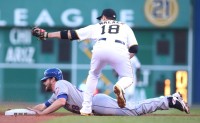
I am reminded of being in the seventh grade. I grew a lot, especially my feet. It must’ve been beyond annoying and expensive for my parents. My mother always insisted on good footwear. My father on the other hand always looked for a deal.
We went to Fayva Shoes (remember that place?). There was some insane sale where if you purchased one shoe, you got the next one half off. The strange thing about this sale was if you got a third it was half-off the half-off price (for example, a $20 sneaker cost $5). Basically, every sneaker after the first one followed this computation.
Anyway, my father made me pick out a shoe that I liked (or hated least). He then literally purchased that sneaker in every half size up to a size 13. His theory was he’d never have to buy me another sneaker again. Plus, he got me a sneaker that cost $0.30. Not an exaggeration. Side note to this story is his plan never would’ve worked as my feet are about a size 14.
Guess how well this worked out? C’mon, we were able to purchase a sneaker for $0.30. They were flimsy sneakers. I was playing football, juked, rolled my ankle, and broke my foot. We may have had a sneaker that cost $0.30, but now there was also medical bills. It was penny wise, pound foolish.
The Neil Walker trade is the Mets $0.30 pair of sneakers. We can reasonably argue over whether Walker or Daniel Murphy is the better player. You want to tell me it’s Walker, fine. However, as a result of obtaining Walker for Niese, the Mets now have to look to acquire a fifth starter. By the way, you’re looking for a fifth starter who will agree to only pitch for half the year because at that point Zack Wheeler will return. Good luck with that.
I know Murphy is a free agent, but Ben Zobrist‘s deal was for an average annual value of $14 million a year. Murphy will probably get $2 million less a year than Zobrist. Yes, it would probably be $2 million more than Walker will receive in arbitration. However, Murphy can serve as insurance for David Wright‘s back, whereas Walker can’t.
Sure, the Mets did sign Asdrubal Cabrera. Whether you like the move or not, we should all be able to agree $12 million to Murphy and $9 million to Niese shouldn’t have precluded that signing especially since the Mets aren’t pursuing Jason Heyward or Yoenis Cespedes. Instead, the Mets need to convince a starting pitcher to start for only half a year and an everyday player to accept being in a centerfield platoon with Juan Lagares.
This is ultimately why the Walker deal was a bad trade. The Mets weakened themselves in the rotation without a clear cut replacement in a market where pitchers are getting big deals. Ultimately, the Walker deal had to be about money as he and Niese are going to make similar money, give or take a million.
My $0.30 sneakers? Well, they would have to donated, i.e. we got rid of them. That’s what the Mets will do with Walker after this year. I just hope Walker will be a better fit before he’s gone.
